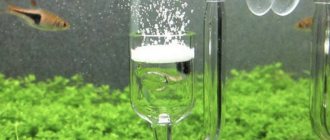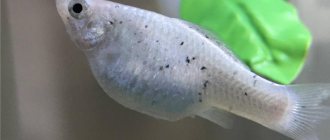All about carbon: the danger of CO2 and methods for neutralizing carbon dioxide emissions
Seoul, Guangzhou, New York, Hong Kong and Los Angeles are the main sources of carbon dioxide in the Earth's atmosphere. Each year, each of them emits more than 150 million tons of CO2. The main technogenic sources of carbon dioxide are industrial enterprises, vehicles and agriculture, primarily deforestation and the transformation of these territories into arable land.
What's wrong with CO2, why is it considered harmful?
Carbon dioxide itself is not harmful to the environment. On the contrary, it is one of the main elements of the life processes of plants. They absorb CO2, process it and release oxygen into the atmosphere. But if there is too much carbon dioxide, it begins to act as thermal insulation for the planet. Radiation from the Sun passes freely through the atmosphere, but the less thermal energy goes back into space, the more greenhouse gases there are in the Earth’s gas envelope. The surface of the planet begins to warm up. The ice is melting, the climate and species composition of flora and fauna are changing.
Nature will develop and evolve further; climate change is a problem, first of all, for humanity, which has been living in relatively comfortable conditions for thousands of years. If the level of the World Ocean changes significantly, disasters will begin, problems will arise not for individual people, but for entire states. They are trying to fight this. The further we go, the more actively the issue of the need to reduce greenhouse gas emissions is discussed, and active actions are taken. Unfortunately, not all corporations and countries are ready to act in this direction. For example, the United States, under the leadership of Donald Trump, even withdrew from the Paris climate agreement. But there is still some progress.
Carbon neutrality as a tool to address climate change
At this year's UN climate summit, 66 countries around the world committed to achieving carbon neutrality by 2050. The document was signed on September 23, 2021. In addition to states, the commitment was signed by 10 regions, 102 cities, 93 companies and 12 investors. In addition, the mayors of 19 of the world's largest cities have announced that their communities will be carbon neutral by 2050. The corresponding document was signed by the authorities of Copenhagen, Johannesburg, London, Los Angeles, Montreal, New York, Newburyport, Paris, Portland, San Francisco, San Jose, Santa Monica, Stockholm, Sydney, Tokyo, Toronto, Tshwane, Vancouver and Washington. By the way, buildings and structures in cities generate more than 50% of greenhouse gas emissions in cities.
What is carbon neutrality? This is one of the methods to prevent or minimize CO2 emissions into the atmosphere. Some companies achieve carbon neutrality on their own by changing the production process, using different materials and chemical compounds. Others offset negative impacts by collaborating with environmental organizations.
Greenhouse gas emissions per capita. Source: World Bank. Actualitix
The second option is more preferable for brands that produce clothing, transport companies, and retailers. They compensate for the harm caused by participating in social projects with an environmental focus. This could be tree planting, forest protection campaigns, agricultural optimization projects, investments in green or waste-free production. Among clothing brands, Burberry, Prada, Michael Kors, Versace, Tommy Hilfiger, Calvin Klein, Hermès, Chanel, Adidas, Nike, Puma, Zara, H&M and other companies have signed carbon neutrality agreements.
But cities and countries continue to have the main influence on solving environmental issues. Some are more advanced in their transition to carbon neutrality than others.
San Francisco . This American city is implementing its own project to reduce greenhouse gas emissions. The leadership of San Francisco decided to make the city carbon neutral, despite the policies of Donald Trump, who, as mentioned above, withdrew his country from the Paris climate agreement. Now residents of the village are gradually switching to renewable energy sources, using bicycles instead of cars whenever possible and planting trees. The result is already there - in 2021, the level of CO2 emissions in San Francisco has decreased by a third compared to 1990. And by 2050, the city's leadership promises to make it carbon neutral. Moreover, the entire state is gradually moving towards this goal.
Liverpool. The city has set a goal of becoming carbon neutral as early as next year. To achieve this, Liverpool is gradually switching to renewable energy sources, pursuing a policy of reducing the number of cars, and engaged in landscaping the city and its surroundings. Control of CO2 emissions is carried out using a specialized blockchain system, which simplifies the process of trading emission quotas. As a result, all emissions data is transparent, and nothing in the registry can be changed.
Copenhagen. Another major city pursuing its own carbon neutral plan. Copenhagen plans to become neutral five years later than Liverpool - by 2025. During this time, it is planned to build municipal solar and wind power plants, introduce smart technologies into municipal services and reduce the number of vehicles.
Helsinki. The Finnish capital plans to become a carbon-neutral city by 2035. The authorities have developed a large-scale plan of 143 points. It includes, as in the projects already described above, the use of green energy, reducing the number of vehicles, popularizing cycling and walking. The Finns also want to reduce thermal energy consumption by modernizing old buildings. The leadership of this country is considering the possibility of banning the sale of cars with internal combustion engines and allowing car companies to sell only electric cars.
Adelaide. An Australian city is working to become the world's first carbon-neutral community. The mayor's office has developed special programs to support citizens who build modern, energy-efficient houses, modernize outdated buildings, purchase electric vehicles, and install wind turbines and solar power plants.
Also, almost all cities that are currently implementing carbon neutrality projects are promoting the concepts of carsharing and ridesharing; the authorities are popularizing electric scooters, scooters and other vehicles that do not emit harmful substances into the atmosphere, while occupying a minimum of space on the road. Transport companies should also help with this. Bolt, for example, is actively developing the idea of ride sharing, expanding its network of electric scooters in cities, and gradually switching to the use of electric vehicles when traveling by taxi. The company recently launched its global Green Plan initiative, which plans to invest €10 million in carbon-neutral travel by the end of 2025. In addition to providing compensation for taxi rides, we want to give our passengers the opportunity to donate and participate in environmental initiatives directly in the Bolt app.
Startups are emerging that aim to recycle carbon dioxide. One such company is LanzaTech. It produces fuel from gaseous emissions from industrial enterprises. Another startup, Climeworks, pulls carbon dioxide from the atmosphere, using it as an intermediate element to produce methane. The plant was built last year with funding provided by the European Union. Another option is to convert CO2 from a gaseous state to a solid state, that is, chemical bonding with rocks. Such a plant operates in Iceland, introducing CO2 removed from the atmosphere into the lithosphere. Of course, the productivity of such systems is not very high, but over time they will be used in more regions, reducing the concentration of carbon dioxide.
Despite the fact that most of the problems on our planet are a direct result of human activity, today the consumer society is beginning to realize the importance of making a daily contribution to the fight against climate change. The issue of environmental protection ceases to be the prerogative of environmental organizations. The scale of the problem forces us all to unite. People are increasingly choosing carbon-neutral transport over conventional transport, buying biodegradable bags or ordering coffee without a plastic lid. All this becomes possible, among other things, due to the timely response of business to environmental issues. Modern business cannot function by ignoring environmental issues. Thus, the attempts of many large companies to achieve carbon neutrality are the beginning of a very important trend for all of us.
From the book: Christel Casselman Aquarium design
beginning
Fermentation with fruit and berry yeast.
CO2 for an aquarium using fermentation, the most famous and popular method
, first of all, due to its simplicity and low cost. Disadvantages: uneven gas supply, such a bottle shoots out, sometimes it’s thick, sometimes it’s empty. But this is the simplest and cheapest way. A mixture like jelly works more evenly, but its use is more labor-intensive. Most aquarists use two pet bottles (vouchers), which are refilled alternately.
Another accessible method is a mixture of soda and citric acid. The disadvantage is that the components are a little more expensive, and require a more complex reactor to use. Water must be introduced into the mixture gradually, otherwise it will all be used up at once. In addition, in reactors (when water drops onto a dry mixture), the mixture becomes covered with a crust, and the reaction dies out. If you wish, you can, of course, solve this problem.
Another disadvantage of fermentation is the choice of yeast itself. The most accessible dry yeast. Yeast from different manufacturers is sold, but they are not very suitable for producing carbon dioxide. Of these, you still need to choose the yeast that will work, and even those, somehow, every other time.
Fruit and berry fermentation tremors give good results. This idea was prompted by the advice: “throw two grapes in there, it will work a little longer.” But it’s true that anything ferments without any yeast if you don’t put it in the refrigerator in time. Later I found descriptions in recipes for making wine, where unwashed raspberries are used for this. In principle, any fruit and berry waste is suitable, for example, you can use the remains of compote. It is enough to dilute the compote in a small container (or add water to the fruit and berry waste), and after two or three days the resulting liquid will ferment. The presence of yeast is easily determined by the smell of alcohol. Such yeast will be completely free, and most importantly, you don’t need to prepare it again every time. It is enough to leave half a glass of mash in the used bottle and add sugar and water. The very next day we will get carbon dioxide at the output.
Spent mash is most often simply poured out, which is a significant drawback of this method of producing CO2. It’s a terrible shame to pour out the finished product, from which the alcohol remains to be separated, even when it is not needed. Nikulin didn’t see this disgrace! An attempt to freeze the mash did not lead to anything; the liquid freezes all at once, and does not separate. The long-known method of distillation remains, and you can distill mash from any waste. Distillations are made to separate alcohol from other waste. Small 5 liter devices cope with this task quite well. And taking into account the fact that alcohol is no longer sold in pharmacies, it makes even more sense to do a little for medical purposes.
If you don’t have a machine, but it’s still a pity to pour it out, you can ferment the mash with raisins, at least once as a test, to calm your conscience. Then at the output we will immediately get CO2 gas and wine. By being patient and letting the product steep, you can get a good drink. Having played enough with mash, I finally switched to the balloon system, now the process is fully automated, and my conscience does not bother me.
Start
CO2 - cylinder system for an aquarium.
How to assemble an automatic carbon dioxide supply for an aquarium with your own hands.
So, having played enough with the adventure game, you decided to switch to the balloon system, all that remains is to find out where you can buy everything you need. If price doesn’t matter much to you, then you can order everything turnkey in online stores. Such pleasure will cost about 13 thousand rubles a set. But if money is not so rosy, then our Russian patience and ingenuity remain.
First of all, we need a cylinder; a carbon dioxide one is best, but if we don’t have one, we can also use an oxygen one. A fire extinguisher or propane cylinder is not suitable, it is not designed for the required pressure. Next, the cylinder will need a pressure reducer. Such equipment can be bought in almost any city.
Here, for example, is what I managed to find in Electrotechnical:
Carbon dioxide cylinder, 5 l - 3800 rubles. U-30KR-2M carbon dioxide reducer - 1320 rubles. Total - 5120 rubles issue price.
But that's not all, to connect everything to the aquarium, you need an automatic system. If you live in Moscow, or a large industrial city, then it may be worth visiting pneumatic equipment stores. If you are not a Muscovite, then everything is somewhat more difficult; the conclusion is: living in the provinces is a big sin.
In this case, all that remains is to search in online stores for pneumatic equipment, but before you look, you need to know exactly what you need, below I will indicate the markings of the parts that I bought for myself, perhaps this will make your search easier:
1. Mechanical valve for turning on and off the air supply,
(namely, we need: A321-1E2). In stores it is described as: direct-acting electro-pneumatic distributor. Series A
Direct acting electro-pneumatic distributors.
Series A. 2/2, 3/2 two- and three-line, two-position, monostable, bistable (with G90 coil). Connection M5, G1/8. Quick connector no.4.
Direct-acting electro-pneumatic distributors of Series A can operate in air both with atomized oil and without oil. They are supplied in 2/2 and 3/2 lines/pos. normally closed (N.C.) or normally open (N.O.). Also, direct-acting electro-pneumatic distributors can have different housing designs - with threaded holes for connecting pipelines and supply air supply - for the most complete coverage of all applications. The mechanics of the valves have been developed very carefully: all internal working parts are made of stainless steel and the seals are made of nitrile butadiene rubber (NBR).
2. It will require an electromagnet
(solenoid A7E) is designed as a separate coil, which can be easily removed without the use of tools and without pneumatic shutdown of the valve. This series has different types of coils that are completely interchangeable in terms of installation. There is also a 122-800 socket connector for connecting to a 220W network.
3. Fine tuning throttle
RFO 382-1/8, for adjusting the compressed air flow in a pneumatic system by creating local hydraulic resistance to the air flow. The finer the setting, the easier it is to adjust the carbon dioxide supply.
RFO 382-1/8 throttle parameters:
Nominal pressure: 1-10 Bar for models with G1/8 connection. Operating pressure: 6 bar Nominal diameter: 2 or 3 mm (G1/8)
4. To connect the parts we need an adapter nut
s2500 1/8.
5. Check valve
VNR-210-1/8, it is needed to ensure that water does not enter the carbon dioxide supply system.
6. Union fitting with union nut for plastic tubes
511 6/4-1/8 Tubes diameter: 6/4 Connection: G1/8. Working pressure: 0.8 – 25 bar.
These connections can be used with rigid nylon tubing. The union nut is tightened by hand or with a wrench. The special cone shape ensures the integrity of the tube. All the fun costs about 2,500 rubles plus delivery and transfer of funds. The cost with a cylinder and reducer is approximately 7620 rubles, the price is indicated as of March 1, 2012.
This is all that is worth ordering in the online store, but our troubles do not end there; to connect the gearbox and valve, you need an adapter nut and gaskets for it. You can buy gaskets at a plumbing store, but no one will sell the nut; you can order it from a mechanic. For example, you can ask around at the market where plumbing fixtures are sold, surely someone will help.
All that remains is to collect it all in the following order:
We connect the electro-pneumatic distributor (valve) to the solenoid and plug.
Tighten the adapter s2500 1/8 nut:
We connect the fine-tuning throttle RFO 382-1/8 and the adapter nut:
Next is the check valve and fitting:
And now we connect all the automation to the gearbox via an adapter nut:
Well, all that remains is to check all the connections, carbon dioxide is very volatile. It is better to connect a timer to the network through an outlet to set the time for turning on and off the carbon dioxide supply. Supply gas to the aquarium using a gas generator (diffuser).
Start
Test for CO2 (carbon dioxide in an aquarium)
The principle of determining co2 in an aquarium (theory), making a tester with your own hands.
Having connected the supply of carbon dioxide to the aquarium, it becomes necessary to measure what we supply and how much. Measuring the presence of carbon dioxide in an aquarium is based on the change in pH when CO2 is supplied. The more carbon dioxide is supplied, the more the pH level decreases. However, the relationship is not direct; it also depends on the carbonate hardness of the water kh. More details can be found in the table. CO2 content in mg/l, carbonate hardness in German degrees (dkh).
Accordingly, to determine the level of CO2, we need two tests to determine the hardness and acidity of water.
Using a drop test from NILP we determine the water hardness. My test showed kh 6 German degrees. Now we measure the pH: pour 5 ml of aquarium water into a measuring cup and add indicator liquid according to the attached instructions. We compare the obtained result with the color scale of the drop test. The test shows a pH of 7 mg/l, that is, the optimal amount of CO2.
But this does not mean that the CO2 supply should be turned off. In the herbalist, the plants will take out all the free carbon dioxide in 1 hour, after which the plants will begin to starve, leaving a niche for the simplest algae. In addition, the acidity of the water (ph) will begin to rapidly shift to an alkaline environment, which sometimes may not be desirable. A change in pH can also occur for other reasons. To constantly monitor aquarium water, it is better to install a long-term CO2 test.
This test can be purchased at a pet store. But you can easily assemble it yourself. It is based on the fact that carbon dioxide not only easily dissolves in water, but also evaporates just as easily from the surface of the water. The direction of the process depends on the concentration of CO2 in the media. That is, if two liquids are combined through an air gap, then in about two hours equilibrium will be restored, and the concentration of CO2 in the dough will be equal to that of an aquarium.
Start
Making a CO2 tester with your own hands.
Indicator liquid for testing.
Using the properties described above, it is easy to select a liquid for the indicator of the desired and, most importantly, unchangeable hardness. Usually kh 4 is used as the most convenient for testing, but this is not necessary. Let's look at the table of the optimal CO2 level: water hardness kh 1 - in principle, this is not suitable as we will not see readings of too high a CO2 value. The most convenient for testing is the optimal water hardness, that is, kh 3.5 to 8.0, which gives us the opportunity to determine any deviation from the optimal CO2 value. Please note that many factors influence the accuracy of tests, so the readings are very approximate. But we don’t need “super” accuracy; it’s enough to define roughly: a lot, a little, normal.
Let's look at the NILP color ph scale. The most distinguishable by color (yellow from light green) is ph 6.5, it is important for us to most accurately determine the exact limit of too much CO2 presence, which means ideally kh 3.5 - 4. To do this, we take distilled water from the pharmacy and mix it with tap water to the desired level water hardness. However, if the water hardness in your tap is optimal, you can use it, only the indicators on the color scale should be taken into account according to the table. In any case, it is advisable to first test the water used for the test in order to have an idea of what the color standard looks like (a lot, a little, normal). You can change the acidity of water using lemon juice.
DIY CO2 tester.
To create a tester, any glass vessel of the required size is suitable; I used a container of penicillin or brilliant green.
We cut the 2 ml syringe to the required size, about half the length of the glass container, glue it with silicone glue, and let it dry for one day.
Pour water of the required hardness into a measuring cup (I used kh 4) and add the NILPA test for ph according to the instructions. Pour the resulting test solution into the tester. We insert a piece of white paper into the syringe tube to create a background. We fix it in an aquarium under water with the hole down and after two hours we look at the result. Yellow color ph 6.0 - too much CO2; shifting to orange is clearly too much. Light green, green is the norm, a shift to a blue tint is a clear drawback.
Basic start










